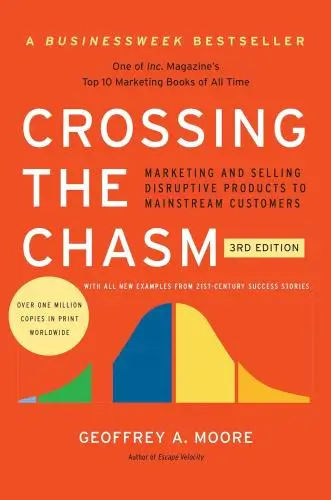
Crossing the Chasm
Marketing and Selling Disruptive Products to Mainstream Customers
What's it about?
Crossing the Chasm dives into the pivotal challenges tech startups face moving from early adopters to a broader mainstream market. Geoffrey A. Moore offers invaluable strategies for overcoming this crucial transition, a make-or-break moment for innovative companies. This book is a roadmap for entrepreneurs aiming to bridge the gap and capture the heart of the mass market, ensuring their groundbreaking ideas achieve widespread success.
About the Author
Geoffrey A. Moore is an author and consultant known for his work on the adoption of high-tech products. His seminal book, "Crossing the Chasm," explores marketing strategies for technology startups. Moore's writing focuses on the challenges of market development and the dynamics between early adopters and the mainstream market.
10 Key Ideas of Crossing the Chasm
Identify and Target a Specific Niche Market First
Focusing on a specific niche allows for a more tailored marketing approach, making it easier to meet the unique needs of a particular segment.
This strategy helps in creating a strong foothold within a smaller, more manageable market segment before expanding to broader markets.
By delivering exceptional value to this initial niche, a company can generate positive word-of-mouth and build a loyal customer base, which is crucial for crossing the chasm between early adopters and the early majority.
Learn DeeperResearch Your Market Thoroughly: Start by identifying a niche that aligns with your product or service. Look for a segment that is underserved or has specific needs that are not being fully met by current offerings.
Tailor Your Product or Service: Customize your offering to meet the unique needs of your chosen niche. This might involve tweaking features, adjusting pricing, or offering specialized support.
Develop Targeted Marketing Strategies: Craft marketing messages that speak directly to the concerns and desires of your niche market. Use channels where your target audience is most likely to be found, whether that's social media, industry forums, or specific online communities.
Gather Feedback and Iterate: Once you've launched your product or service, actively seek feedback from your initial users. Use this feedback to make improvements and better serve your niche.
Leverage Success Stories: As you start to build a satisfied customer base, encourage them to share their experiences. Testimonials, case studies, and word-of-mouth referrals can be powerful tools to attract more customers from your niche.
- Example
A software company identifies a niche market of small law firms struggling with client management. They tailor their software to meet these specific needs, offering features like secure client communication portals and automated billing tailored for small law firm operations.
- Example
A fitness apparel brand notices a gap in the market for high-quality, plus-size workout clothes. They design a line specifically for this demographic, focusing on comfort, durability, and style. Through targeted social media campaigns and partnerships with plus-size fitness influencers, they successfully reach and engage their niche market.
Develop a Compelling Value Proposition for Your Target Market
A compelling value proposition clearly articulates why your product or service is uniquely suited to meet the needs of your target market better than any other options available.
It should highlight the specific benefits that directly address the pain points of your target audience.
This clarity helps in persuading skeptical mainstream customers who are risk-averse and need a solid reason to switch from their current solutions.
Learn DeeperIdentify Your Target Market's Pain Points: Start by conducting research to understand the specific challenges and needs of your target market. Use surveys, interviews, or focus groups to gather this information.
Highlight Unique Benefits: Clearly articulate how your product or service uniquely addresses these pain points. Focus on benefits that are directly relevant to your target audience.
Craft a Clear Value Proposition Statement: Combine your understanding of the target market's needs with the unique benefits of your product into a concise statement. This should communicate why your solution is the best choice.
Test and Refine Your Value Proposition: Share your value proposition with a small segment of your target market to gauge its effectiveness. Use the feedback to refine your message for clarity and impact.
Communicate Consistently Across All Channels: Ensure that your value proposition is consistently communicated across all marketing materials, website, social media, and sales conversations. Consistency helps in building trust and recognition.
- Example
A software company identifies that small businesses struggle with managing multiple tools for different tasks. They highlight their product's unique benefit of integrating various business functions (sales, marketing, customer service) into one platform, making it easier and more cost-effective to manage.
- Example
A fitness app discovers that its target market, busy professionals, finds it hard to commit to long workout sessions. The app's value proposition focuses on offering quick, 15-minute workouts designed specifically for people with limited time, emphasizing convenience and efficiency.
Create a Whole Product Concept
The whole product concept involves ensuring that your offering includes not just the core product but also all the additional features, services, and support that customers require to achieve their desired outcome.
This comprehensive approach addresses one of the key challenges in crossing the chasm: convincing pragmatist buyers who expect a complete solution that works out of the box without the need for further customization or external components.
Learn DeeperIdentify the Core Components of Your Offering: Start by clearly defining what your core product or service is. This is what you're selling at its most basic level, without any added features or services.
Understand Your Customer's Complete Needs: Go beyond what your product does. Think about the end-to-end experience of someone using it. What additional features, services, or support might they need to achieve their goals?
Develop a List of Additional Offerings: Based on your understanding of your customer's needs, list out all the additional components that would make your product a 'whole product'. This could include customer service, training, additional features, etc.
Create Partnerships if Necessary: If your company can't provide all the components of the whole product internally, look for partners who can fill those gaps. This could mean integrating with other software, offering third-party services, or even referring customers to trusted providers for parts of their journey.
Communicate the Value of the Whole Product: Make sure your marketing and sales materials clearly explain not just the core product, but also the value of the additional components. Highlight how this comprehensive solution makes life easier or better for the customer.
- Example
A software company sells a project management tool (the core product) but realizes their customers also need training for their teams, integration with existing tools like email and file storage, and ongoing support. They develop a comprehensive package that includes these services, effectively creating a whole product.
- Example
A bicycle manufacturer understands that buying a bike also means customers are concerned about maintenance, safety, and possibly even learning to ride better. They partner with local shops for maintenance, include high-quality locks with each purchase, and offer free access to riding safety courses, making their bikes a more complete solution for new and experienced riders alike.
Position Yourself Against the Competition Effectively
Effective positioning requires understanding your competitors' strengths and weaknesses and differentiating your product in a way that leverages your unique advantages.
This might involve focusing on superior technology, better customer service, or a more innovative business model.
Clear positioning helps potential customers understand why your solution is the best choice for them, making it easier to cross the chasm by standing out in a crowded market.
Learn DeeperIdentify Your Competitors: Start by making a list of your direct and indirect competitors. This will help you understand the landscape you're operating in.
Analyze Strengths and Weaknesses: For each competitor, identify their strengths and weaknesses. Look at their product offerings, customer service, pricing, marketing strategies, and any other relevant factors.
Highlight Your Unique Selling Proposition (USP): Based on your analysis, determine what makes your product or service unique. This could be anything from innovative technology, superior customer service, to a more sustainable business model.
Communicate Your Positioning Clearly: Use your USP to craft clear, compelling messaging that speaks directly to your target audience's needs and how you meet them better than anyone else.
Continuously Monitor and Adapt: The market and your competitors will evolve, so regularly review and adjust your positioning strategy to ensure it remains effective.
- Example
If you're launching a new fitness app and your analysis reveals that most competitors lack personalized workout plans, your USP could be a highly customizable workout experience tailored to individual fitness goals.
- Example
For a small coffee shop competing against large chains, focusing on locally sourced, organic ingredients and creating a community-focused space could be key differentiators that appeal to customers looking for a more personal, sustainable option.
Leverage Pragmatic Marketing Frameworks
Pragmatic marketing frameworks focus on understanding and addressing the actual needs and problems of the market rather than pushing the technological features of a product.
This approach emphasizes listening to customers, adapting products based on feedback, and ensuring that marketing messages resonate with the target audience's real-world concerns.
By aligning product development and marketing efforts with customer needs, companies can more effectively bridge the gap between early adopters and the mainstream market.
Learn DeeperIdentify Your Customer's Pain Points: Start by conducting surveys, interviews, or focus groups to understand the challenges your target market faces. This will help you tailor your product or service to address these specific issues.
Adapt Your Product Based on Feedback: Implement a system for collecting and analyzing customer feedback. Use this data to make informed adjustments to your product, ensuring it meets the evolving needs of your market.
Craft Resonant Marketing Messages: Develop marketing materials that speak directly to the concerns and desires of your target audience. Highlight how your product solves their problems, rather than focusing solely on its features.
Educate Your Customers: Create content such as blog posts, videos, or webinars that help your target audience understand how your product can solve their problems. Education is key to moving them from awareness to decision-making.
- Example
A software company conducts user experience interviews to discover that their target customers are frustrated with complicated interfaces. They simplify their product design and highlight this change in their marketing, emphasizing ease of use.
- Example
A health food brand learns through surveys that their customers are seeking more plant-based options. They expand their product line to include these items and adjust their marketing to focus on the benefits of a plant-based diet, using real customer testimonials.
Deeper knowledge. Personal growth. Unlocked.
Unlock this book's key ideas and 15M+ more. Learn with quick, impactful summaries.
Read Full SummarySign up and read for free!
Crossing the Chasm Summary: Common Questions
Experience Personalized Book Summaries, Today!
Discover a new way to gain knowledge, and save time.
Sign up for our 7-day trial now.
No Credit Card Needed

Similar Books

$100M Offers
Alex Hormozi
Principles of Marketing, Global Edition
Gary Armstrong
The 100 Best Business Books of All Time
Jack Covert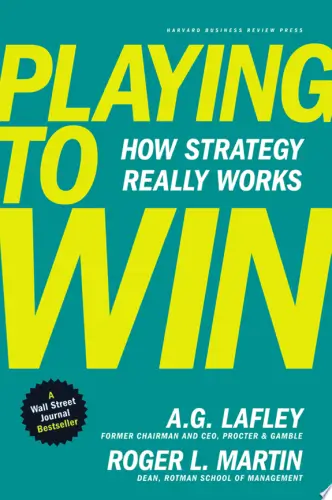
Playing to Win
A.G. Lafley
Productize
Eisha Armstrong
Start Your Own Pet-Sitting Business and More
Entrepreneur Press
The 22 Immutable Laws of Marketing
Al Ries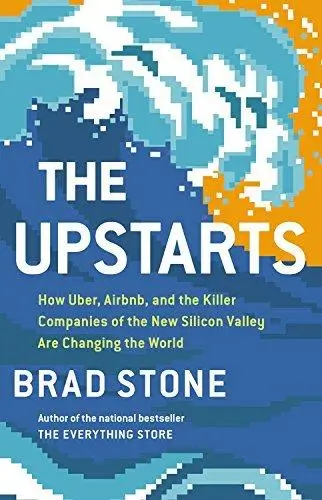
The Upstarts
Brad Stone
Lean Analytics
Alistair Croll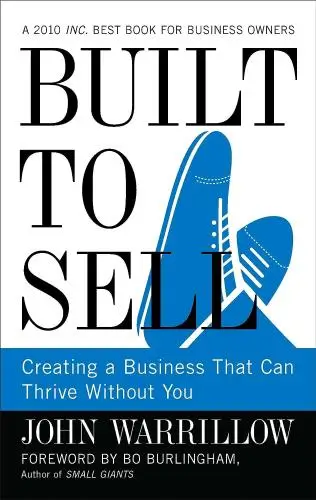
Built to Sell
John WarrillowTrending Summaries

Peak
Anders Ericsson
Never Split the Difference
Chris Voss
Smart Brevity
Jim VandeHei
The Psychology of Money
Morgan Housel
The First 90 Days
Michael D. Watkins
Atomic Habits
James Clear
Thinking, Fast and Slow
Daniel Kahneman
The Body Keeps the Score
Bessel van der Kolk M.D.
The Power of Regret
Daniel H. Pink
The Compound Effect
Darren HardyNew Books

Fichte
Johann Gottlieb Fichte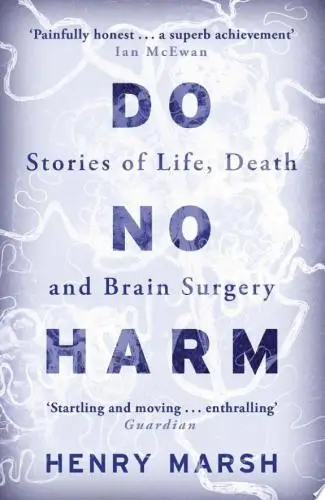
Do No Harm
Henry Marsh
This is Going to Hurt
Adam Kay
This Is Your Brain on Joy
Earl Henslin
Learning Habits
Sarah Nicholl
TOP KNIFE: The Art & Craft of Trauma Surgery
Asher Hirshberg,
English Spirituality
Gordon Mursell
The ^AOxford Handbook of Job Loss and Job Search
Ute-Christine Klehe PhD
Job Interviews For Dummies®
Joyce Lain Kennedy
